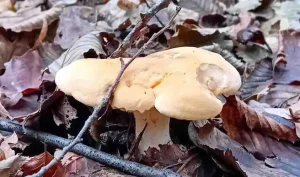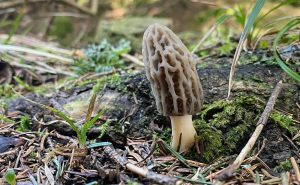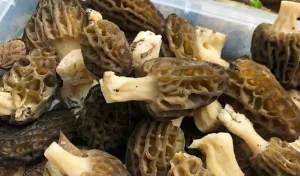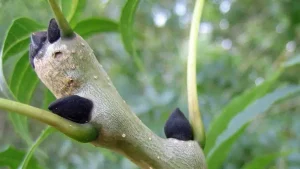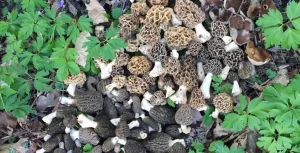Where to find Black Trumpet mushrooms is a key question for enthusiasts venturing into the rich world of fungi.
Known also as the Trumpet of the Dead, these mushrooms carry a mystique that entices both culinary experts and foragers.
This article explores their habitat, identification, culinary applications, and gathering tips, offering valuable insights for those eager to discover and enjoy this unique fungal treasure.

Habitat: Where to Find Black Trumpet Mushrooms
Black Trumpet mushrooms thrive in specific environments, preferring the company of hardwoods over conifers. They are commonly found in deciduous forests, particularly under oak, chestnut, and beech trees. These fungi favor acidic and clay-rich soils, often emerging from carpets of dead leaves which help maintain the necessary moisture levels. Mossy areas, especially those not near pine trees, can increase your chances of spotting these mushrooms by providing a contrasting backdrop to their dark hues.
Identification: Distinguishing Features
Identifying Black Trumpet mushrooms is made easier by their distinctive shape and color. These mushrooms are funnel-shaped, with colors ranging from black to gray or brown, and possess smooth or slightly wrinkled undersides without gills, teeth, or pores. Their stems are hollow and thin, often mirroring the cap’s color. Despite their easy identification, their dark color and shape can make them hard to spot against the forest floor.
Culinary Delights: The Flavor of Black Trumpet Mushrooms
Black Trumpet mushrooms are celebrated for their rich, smoky flavor and fruity aroma, drawing comparisons to the esteemed truffle. They are a versatile ingredient in the kitchen, enhancing dishes such as pastas, soups, sauces, and meat dishes with their deep, earthy notes. However, their intensity means they should be used judiciously to avoid overpowering a dish. Cooking them in some form of fat, like butter, can help mitigate any potential bitterness.
Foraging Tips: How to Harvest Black Trumpet Mushrooms
Foraging for Black Trumpet mushrooms can be a rewarding endeavor, though it requires patience and a keen eye. They are not especially rare but can be difficult to notice due to their camouflaging colors. Foragers are advised to look in mossy areas and near hardwoods like oaks and beeches. These mushrooms grow in patches or clusters, making it possible to find a bounty once you spot them. When harvesting, it’s crucial to clean them carefully as they are brittle and tend to accumulate debris.
Preservation: Storing Your Find
Given their tendency to grow in abundance, preserving Black Trumpet mushrooms is often necessary. Fortunately, their hollow nature allows them to dry out quickly and easily at room temperature. For particularly damp specimens, a food dehydrator or an oven on the lowest setting can expedite the drying process. Once dry, they should be stored in a sealed container, where they retain their flavor remarkably well.
In conclusion, the Black Trumpet mushroom is a fascinating subject of study for both amateur mycologists and professional chefs. By understanding where and how to find these mushrooms, along with their culinary uses and preservation methods, foragers can fully appreciate the unique qualities of these forest gems. Whether you’re a seasoned mushroom hunter or a curious novice, the quest for Black Trumpets is sure to add an element of adventure to your culinary explorations.
